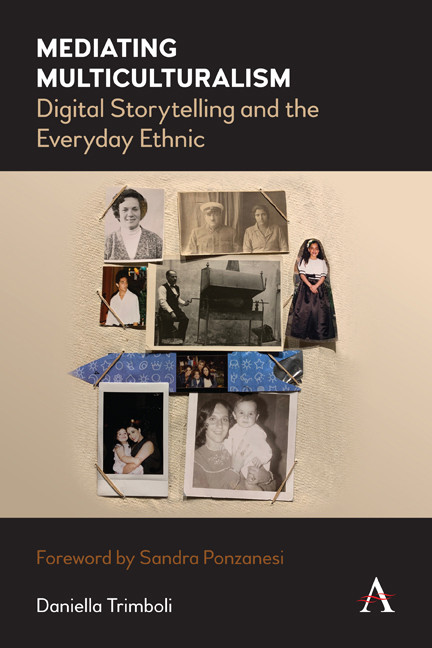Chapter Seven - The Heart of the Matter
Published online by Cambridge University Press: 21 August 2020
Summary
The face speaks. It speaks, it is in this that it renders possible and begins all discourse […] In discourse I have always distinguished, in fact, between the saying and the said. That the saying must bear a said is a necessity of the same order as that which imposes a society with laws, institutions and social relations. But the saying is the fact that before the face I do not simply remain there contemplating it, I respond to it.
– Levinas (1985, pp. 87–88)In the UK when we ask: ‘where are you from?’ We want to know a lot more about you than just your place of birth.
– Daniel Meadows (2001), creator of BBC's Capture Wales digital storytelling programmeIn this chapter, I turn to the body more explicitly; specifically, I consider how affect operates via the force of performativity to shape bodies in certain ways. Certain techniques are used in digital storytelling to create a sense of intimacy between the author of the digital story and its viewers, techniques that frequently utilise the author's body. The author’s body becomes a conduit for ‘expressing’ certain emotions, desires and ideals, positioned and moved in ways that connect this body to the audience. When we pay attention to the mundane practices of the body and the phenomenological experiences of embodying space, we begin to see the way affective economies call upon particular bodily practices that ultimately reproduce the borders of a certain kind of body. As Ahmed (2000, p. 42) argues, examining encounters with Others requires ‘not only an analysis of body images or representations of bodily difference, but also an analysis of how bodily habits and gestures serve to constitute bodily matter and form’.
Following Ahmed (2000) and Nayak (2017), I investigate in this chapter how the bodies in digital stories become marked by differences; how the bodies ‘come to be lived precisely through being differentiated from other bodies, whereby the differences in other bodies make a difference to such lived embodiment’ (Ahmed 2000, p. 42). Examining the embodied practices of the authors in these digital stories also begins to reveal how agency is persistently activated through a complicated negotiation of affective encounters.
What repeatedly appears in the digital stories and community-based arts at large is the use of the face and the hands, especially in scenes with an emotive or serious tone.
- Type
- Chapter
- Information
- Mediating MulticulturalismDigital Storytelling and the Everyday Ethnic, pp. 131 - 142Publisher: Anthem PressPrint publication year: 2020



